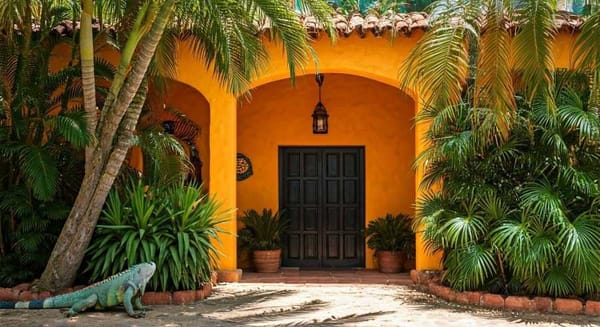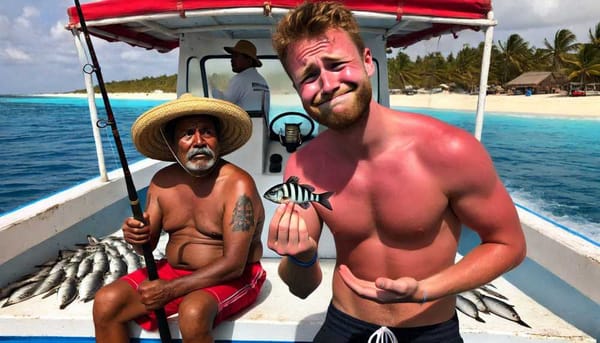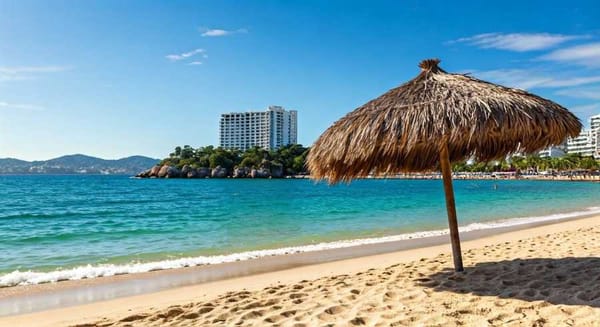The Origins and Traditions of Charanda Drink in Mexico
The distillation of sugarcane juice or one of its byproducts, such as piloncillo, molasses, or crystallized sugar, results in the production of the spirit known as charanda, which has its roots in the city of Uruapan in the state of Michoacán.

The Arabs are credited with the spread of sugarcane in the Mediterranean world and, from there, to the rest of the planet. Originally, the plant had grown in the archipelagos of Southeast Asia, from where it leaped the continent. Although the Chinese had been in contact with the plant since time immemorial, it was some of the people of India who found a way to transform the juice into the granules that are still known today as sugar.
The introduction of sugar in Europe followed different paths. In classical antiquity, there was already talk of sugar, but its use was limited to medicinal purposes since the sweetener par excellence in the Greco-Latin world was honey. The Muslims, on the one hand, found sugar in Persia, from where they took it to the Iberian Peninsula. The Venetians, after the Crusades, settled in the Levant and planted reeds to send sugar to Europe.
Sugarcane in Mexico
Sugarcane was introduced in New Spain a few months after the conquest of Tenochtitlan. The conditions of the territory, which little by little fell into the hands of the Spaniards, proved to be apt for the growth of the plant, so it did not take long for sugarcane fields to appear in different regions of the nascent viceroyalty.
The mills, armed with their corresponding sugar mills -that is, the mills in which the cane was crushed- and surrounded by immense plantations, dominated the valleys of the warm and humid zones. In this regard, names such as Izúcar, Atlixco, Cuautla, Cuernavaca and Zacatepec immediately come to mind. However, sugarcane became omnipresent in the New Spain fields when it was successfully planted in the territory of the current states of Veracruz, Jalisco, Nayarit, Colima, and Michoacán.
The owners of the Novo-Hispanic mills sold part of their product in the local market and exported another part, from which they obtained substantial profits. For the same reason, they were fond of leading a luxurious lifestyle and incurring debts, with the understanding that their wealth was renewed year after year, harvest after harvest. However, many tried their luck, pushed their economic capacity beyond their means, and ended up in ruin, with their sugar mills confiscated and auctioned off in public creditors' meetings.
Rum: A New Alcoholic Beverage
The presence of sugar in the juice extracted from the canes led to the search, also in ancient times, for a way to obtain some kind of alcoholic beverage. The first attempts were developed in Southeast Asia and were reduced to allowing the fermentation of sugarcane juice.
It was in the 17th century when someone - tradition has it that it was a slave - discovered that molasses, a viscous liquid obtained by boiling sugarcane juice, could be distilled and produce an alcoholic beverage with a pleasant taste and adequate alcohol content: rum, the brandy of seafarers who, within or outside the law, sailed the seas in search of booty and treasure or, usually, of markets to sell what they carried in their holds.
The paternity of rum is disputed by different islands of the Antilles, mainly the archipelago of Barbados, where it is supposed to have been distilled for the first time in the 1650s. However, it is very likely that, thirty years earlier, rum had already been produced in the sugarcane plantations of colonial Brazil. At the other end of the world, in Indonesia, a similar process took place, when a distillate of sugarcane seasoned with red rice grains was obtained in pots: arrack.
Sugarcane beverages in New Spain
There is no precise record of when sugarcane beverages began to be distilled in New Spain. It is known, for example, that on several occasions, edicts and edicts were issued prohibiting the production of firewater -called chiringuito-, mainly to promote the sale of those coming from the metropolis.
Although it is not possible to quantify the production of distilled spirits, since it was carried out clandestinely, an idea of its volume can be obtained by considering the residual honey, that is, the remains that remained after the refining of sugarcane juice, before being discarded by the owners of the mills, were sold to those who produced alcoholic beverages, which, by the way, could be anyone.
Since the 16th century, all strata of the population, from the indigenous people to the Spaniards -and perhaps, as in the case of the West Indian plantations, also the slaves- had found it easy to set up stills and process different substances to obtain alcohol. Consequently, the production of these clandestine alcoholic spirits was likely massive.
The authorities finally surrendered to reality and in1796 issued an ordinance permitting the production of sugarcane brandy. The objective of the measure, beyond its social scope, was fiscal: obtaining the corresponding permit, submitting to a certain inspection, and selling the product openly caused taxes. And the Spanish Crown, if anything, required funds to operate.
The sugarcane liquor in Uruapan, Michoacán
The sugarcane liquor produced in the vicinity of Uruapan, Michoacán, is called charanda, a P'urhépecha term meaning "red earth" or " colored earth", which alludes to the color of the nearby hill of La Charanda. Sugar cane was brought to Uruapan in the 16th century, and the first sugar mill in the region was probably established there, although records show that it was in the 17th century when the Augustinians established the hacienda of Taretán to improve the production processes related to sugar cane and sugar.
Likewise, since there is no indication of when or how liquor began to be produced in the place, the process likely was as described above: any person with knowledge of the area approached the mill one day, bought the honey that remained as residue from the refining process and, in a rustic still, produced spirits.
However, it soon became evident that the brandy produced near Uruapan was different from others. The cane used for its production, for example, contained more sugar than others because it grew at a higher altitude above sea level. Likewise, the water used -from a nearby spring- gave it a particular flavor. In the mid-nineteenth century, there was already talk of liquor produced on the slopes of the hill of La Charanda, although perhaps the name had not spread, or had not even been coined at that time.
The Origin of Charanda
It was in 1907 when, according to the story, Cleofas Murguía Riera established, in Uruapan, the first factory of an eau-de-vie specifically called charanda. Subsequently, a significant number of brandy producers based in Uruapan decided to follow Murguía's lead and give the beverages they produced the same name. As the drink became regionally popular, it did not take long for charanda manufacturers to appear in the municipalities located in the central part of the state of Michoacán.
Charanda has a production process that gives it a different character from that of other sugarcane distillates, as it incorporates fifty percent sugarcane juice and fifty percent molasses. The mixture is left to ferment for three days, after which it undergoes a double distillation -to eliminate the alcoholic components that are not suitable for human consumption- from which a beverage with alcohol levels close to seventy percent is produced.
The liquid is then reduced with distilled water, thanks to which the sweet tones of the beverage emerge, distinguishing it from other distillates and placing it at levels close to thirty-five degrees of alcoholic purity. Once this last procedure is completed, it is left to mature in oak or, better, oak barrels, wood from which, according to the recommendations of some specialists, the fermentation vats and the channels that connect them to the stills should also be made.
Despite all its virtues, charanda was still a product consumed almost exclusively locally, whether it was associated with a wide range of civic and religious celebrations -the Day of the Dead, for example-, in which case it was assumed that charanda consumption would occur when people decided to have a drink just to have a good time. Outside Michoacán, little was known about charanda and it was not consumed. Its presence on the shelves of specialized stores was minimal, as were its sales, which were helped by an almost total absence of advertising.
Charanada Mexican Official Standard
For this reason, to promote charanda, in 2000, the Charanda Producers Association began the process to get the Mexican Institute of Industrial Property to consider the declaration of protection of the appellation of origin for charanda. In November of the same year, when no comments were received regarding the contents of the standard, it was published in its final version on February 14, 2001.
Mexican Official Standard NOM-144-SCFI-2000, "Alcoholic beverages. Charanda. Specifications" established the existence of four different types of charanda, similar to those used to catalog rum: white, golden, reposado, and añejo. Of these, the first refers to natural charanda, the third and fourth to charandas matured in oak or oak barrels for at least two and twelve months, respectively, and the second to a mixture of the white type and one of the other two. Likewise, it pointed out the possibility that agents other than the charanda could be used to modify its flavor or appearance, such as natural oak or oak extracts, sugar-based syrup, and caramel color.
Finally, as a matter of first order, it was determined that the charanda had to contain a minimum of thirty-five degrees of alcoholic content and a maximum of fifty-five, regardless of whether it was white, gold, aged, or reposado. Until then, the matter was left to the discretion of the producers, who as a general rule established it above 35% and, in some cases, above 50%. After the issuance of the official standard, most manufacturers decided to set it at forty or thirty-five percent, so that the sweet tints of the beverage would be perceptible to the consumer.
Three years after the Official Norm NOM-144-SCFI-2000 was issued, the Mexican Institute of Industrial Property issued the declaration of protection for the denomination of origin "Charanda" which, in principle, sought to protect the original beverage from a significant amount of cheap and poor-quality alcohols that improperly used the name. In addition to Uruapan, the birthplace of charanda, the appellation of origin extended to the municipalities of Ario, Cotija, Gabriel Zamora, Nuevo Parangaricutiro, Nuevo Urecho, Peribán, Los Reyes, Salvador Escalante, Tacámbaro, Tancítaro, Tangancícuaro, Taretán, Tocumbo, Turicato, Uruapan and Ziracuarétiro.
If the declaration of protection of the appellation of origin took special care to clarify those aspects of the region that endowed it with an identity and that were transmitted to the charanda. Thus, the presence of volcanic sediments, added to the general altitude of the region included in the appellation, was decisive for the production of exceptional canes, from which a juice different from all others produced by canes planted anywhere in the national geography would be obtained. According to the declaration, the Michoacán canes were unique in terms of the sweetness of their flavor and aroma, and their juice did not have the grassy taste that could be found in any other. Consequently, the distillate obtained from them deserved to be backed by a denomination of origin.
At present, the Charanda Regulatory Council is seeking to position the producers of the liquor in domestic markets, but especially abroad, even though they have not yet been authorized to use the appellation of origin. The central idea is to create a culture of consumption of charanda that will allow it to surpass the historical maximum of half a million bottles produced annually through intense marketing campaigns and, above all, by inserting the product in campaigns launched by the state and federal governments in which it is made clear that charanda is not only a Michoacan spirit: it is a fundamental part of the tradition and, of course, of national identity and culture.
This is a paid subscription-only article. Thank you for being a subscriber. You can also access a dedicated Plus content section which is continuously updated with the latest travel guides and other feature content you won't find elsewhere online. Alternatively, if you are ready to unsubscribe, you can do it at the end of this email. Or just read on.
Maximiliano




